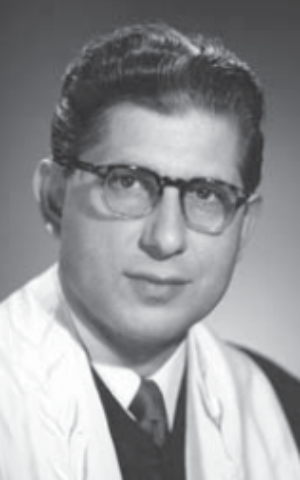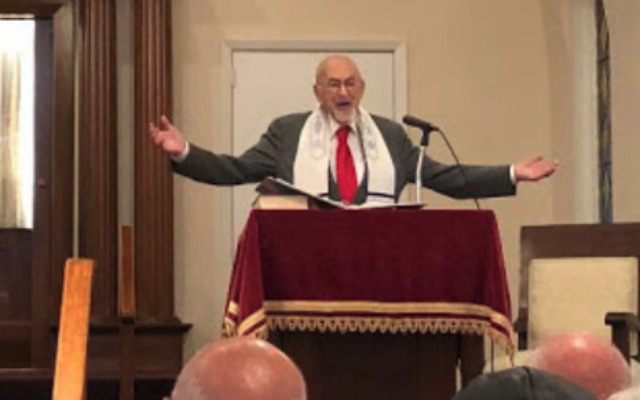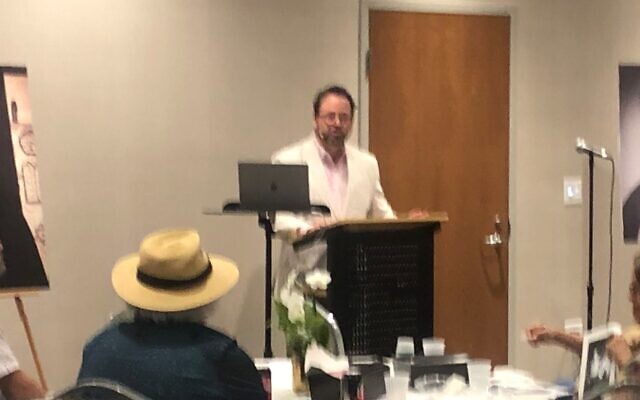Rabbi Revisits Jewish Civil Rights History
Temple Sinai Rabbi Brad Levenberg offers Scholar-In-Residence program that highlights little-known Southern rabbis.
Temple Sinai paid tribute earlier this month to a group of largely forgotten Southern rabbis who were leaders in the civil rights struggle during the 1950s and 1960s. In a scholar-in-residence program June 4-5, Associate Rabbi Brad Levenberg called the group of five religious leaders in the South “giants” whose seminal work in this critical period of American history has mainly been ignored.
Levenberg researched the careers of the rabbis for a Ph.D. dissertation he just completed. He believes that their work 60 years ago is directly relevant to the challenges rabbis face today.
In an interview after the presentation, Levenberg said, “Rabbis today have a lot to learn from the leadership examples of these rabbis of yesterday, specifically how they dealt with the contentious and divisive community issues, how they were able to read and understand the context of their community and their role in the community, and as well how unafraid they were to be able to take stands according to their moral convictions.”

Typical of the activists was Rabbi William Silverman, who led Nashville’s largest synagogue Congregation Ohabai Sholom during the 1950s, Levenberg said. Silverman hosted a weekly radio show and was a strong supporter of racial integration in the years following the historic 1954 U.S. Supreme Court decision outlawing segregated schools.
In 1958, the same year that The Temple in Atlanta was bombed, the Nashville Jewish Community Center was also attacked. Minutes after the community center blast, a caller from the “Confederate Underground” called the Silverman home to tell the rabbi that his synagogue would be next.
Silverman answered the threats against the synagogue with a sermon the following Friday night that was defiantly titled “We Will Not Yield.” But he was also made a deputy sheriff and carried a gun with him wherever he went.
He organized interfaith clergy and participated at sit-ins and civil rights training sessions at Fisk University, Nashville’s historically black college.
To the synagogue’s members who were prominent retailers in the city, he issued a direct challenge to integrate their work force.
“In a really jarring example, he compelled his congregants at one point to hire more African American workers. And they did. But they hired them to work in the back rooms, never on the main floor,” Levenberg said during his presentation.
The activist rabbis in the South were not always successful in convincing their congregations to follow their lead.
A prime example was Rabbi Burton Padoll, who led the Kahal Kodesh Beth Elohim congregation in Charleston, S.C., beginning in 1961. He continually exhorted his congregation to accept responsibility for a history of supporting racial injustice but was met with less than complete success.
During his Temple Sinai presentation, Levenberg quoted Padoll’s critical words to his Charleston congregation during the 1960s.
“My request of you over these past critical years have been based primarily on your responsibilities towards your fellow man. But many of you have refused to listen. You’ve said that this is not a Jewish problem and that therefore you would not lead the way. You already lost the chance to lead the way.”
After seven years in Charleston, Padoll resigned.
 According to Levenberg, the reluctance by Jewish business leaders in the South to embrace the activism of their rabbis led many religious leaders to work quietly, but effectively, behind the scenes.
According to Levenberg, the reluctance by Jewish business leaders in the South to embrace the activism of their rabbis led many religious leaders to work quietly, but effectively, behind the scenes.
He was particularly impressed by the work of Rabbi Irving Bloom, who served the Springhill Avenue Temple in Mobile, Ala. from 1960 to 1973. Bloom, like so many rabbis of the time, successfully worked in Southern Jewish communities characterized by what one commentator called an “almost possible” and “almost impossible” racial climate.
Levenberg said of Bloom during the scholar-in-residence program, “He was a convener. He was somebody who built relationships and worked to use those relationships to make a difference in Mobile.”
Levenberg did his research over a three-year program in Leadership and Change at Oberlin College in Ohio. He was impressed by how his congregants see what occurred during the civil rights era as a reflection of much of what is happening today.
“I have been receiving recurring comments after my presentation from people who come up to me and say, it’s interesting, the vocabulary may have changed and the times may have changed, but these are some of the exact same issues we’re dealing with right now.”
- Temple Sinai
- Rabbi Brad Levenberg
- Nashville
- Mobile
- Charleston
- Rabbi Irving Bloom
- Rabbi William Silverman
- Rabbi Burton Padoll
- Ph.D. dissertation
- Bob Bahr
- Congregation Ohabai Sholom
- U.S. Supreme Court
- The Temple Atlanta
- Nashville Jewish Community Center
- Kahal Kodesh Beth Elohim
- Springhill Avenue Temple




comments